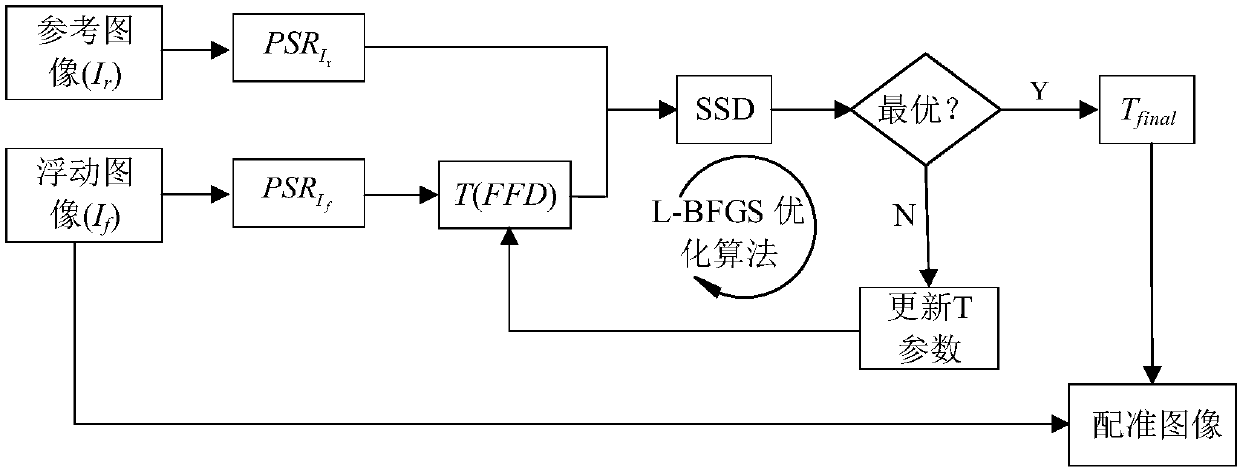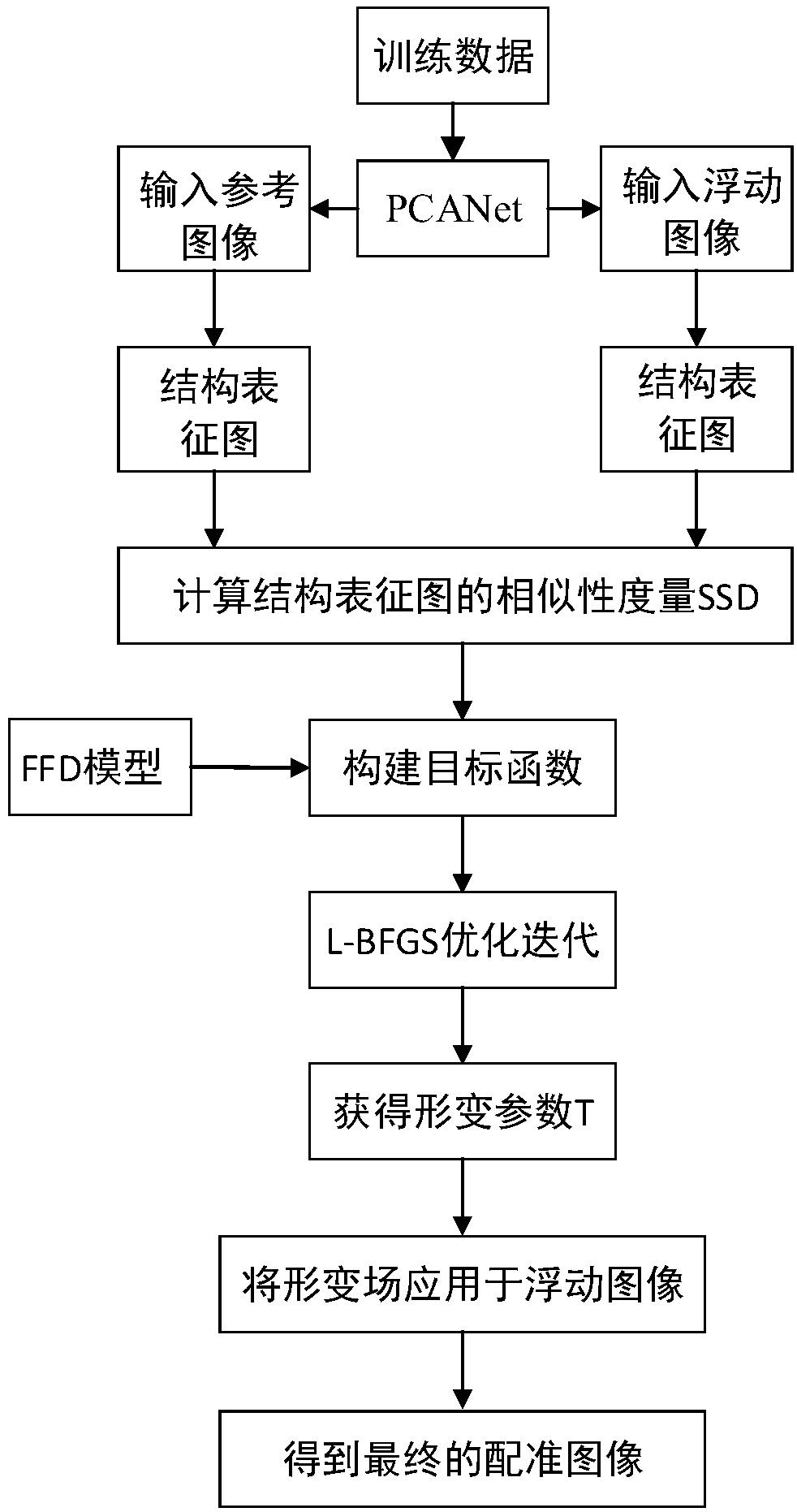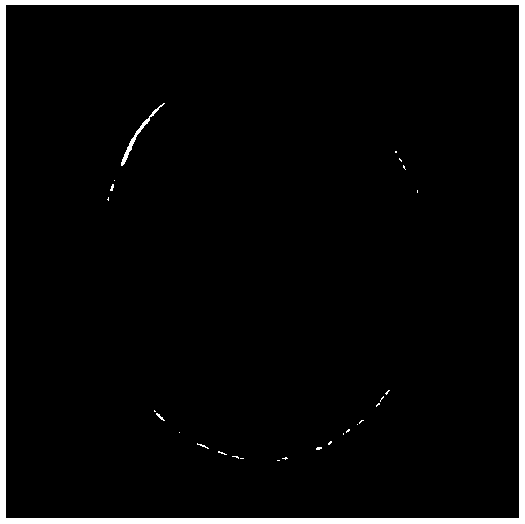Deep-learning-based multi-mode medical image non-rigid registration method and system
A non-rigid registration, medical image technology, applied in the field of non-rigid multi-modal medical image registration, can solve the problem of low registration accuracy of non-rigid multi-modal medical images
- Summary
- Abstract
- Description
- Claims
- Application Information
AI Technical Summary
Problems solved by technology
Method used
Image
Examples
Embodiment 1
[0090] Step 1 trains the PCANet network. Input N medical images For each pixel of each image, take k without interval 1 ×k 2 The block; vectorize the obtained block and perform de-average. Combining all the resulting vectors together will result in a matrix. Calculate the eigenvector of this matrix, and sort the eigenvalues from large to small, and take the first L 1 The eigenvectors corresponding to the eigenvalues. Will L 1 The eigenvectors are matrixed, and the L of the first layer will be obtained 1 convolution template. Convolving the convolution template with the input image will result in NL 1 images. will this NL 1 The image is input into the second layer PCANet, according to the processing method of the first layer, we will get the L of the second layer PCANet 2 Convolution templates, and get NL 1 L 2 images.
[0091] Step 2 Obtain a PCANet-based structural representation (PCANet-based structural representation, PSR for short) according to the PCANet ...
PUM
 Login to View More
Login to View More Abstract
Description
Claims
Application Information
 Login to View More
Login to View More - R&D
- Intellectual Property
- Life Sciences
- Materials
- Tech Scout
- Unparalleled Data Quality
- Higher Quality Content
- 60% Fewer Hallucinations
Browse by: Latest US Patents, China's latest patents, Technical Efficacy Thesaurus, Application Domain, Technology Topic, Popular Technical Reports.
© 2025 PatSnap. All rights reserved.Legal|Privacy policy|Modern Slavery Act Transparency Statement|Sitemap|About US| Contact US: help@patsnap.com



